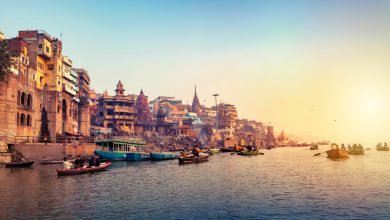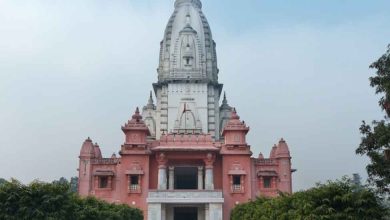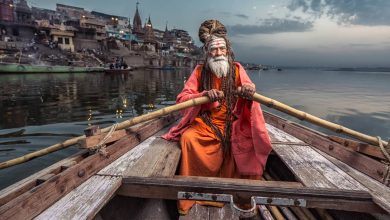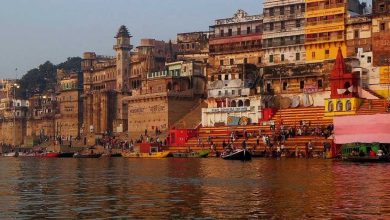Imagine walking barefoot on the stone steps that have been around for a thousand years, the view of the sun rising over the Ganges, smearing it in gold. The echo of chanting Sanskrit mantras intertwined with the clattering of chai cups. This is Assi Ghat, Varanasi, a moment where time stands still and flows simultaneously. Ever wondered how a single site can have such a deep connection to the ancient ritual while still meeting the chaos of modern-day India? The southernmost ghats of Varanasi, such as Assi, are more than just a stop for tourists; it is the place where authentic spiritual Varanasi emerges every morning.
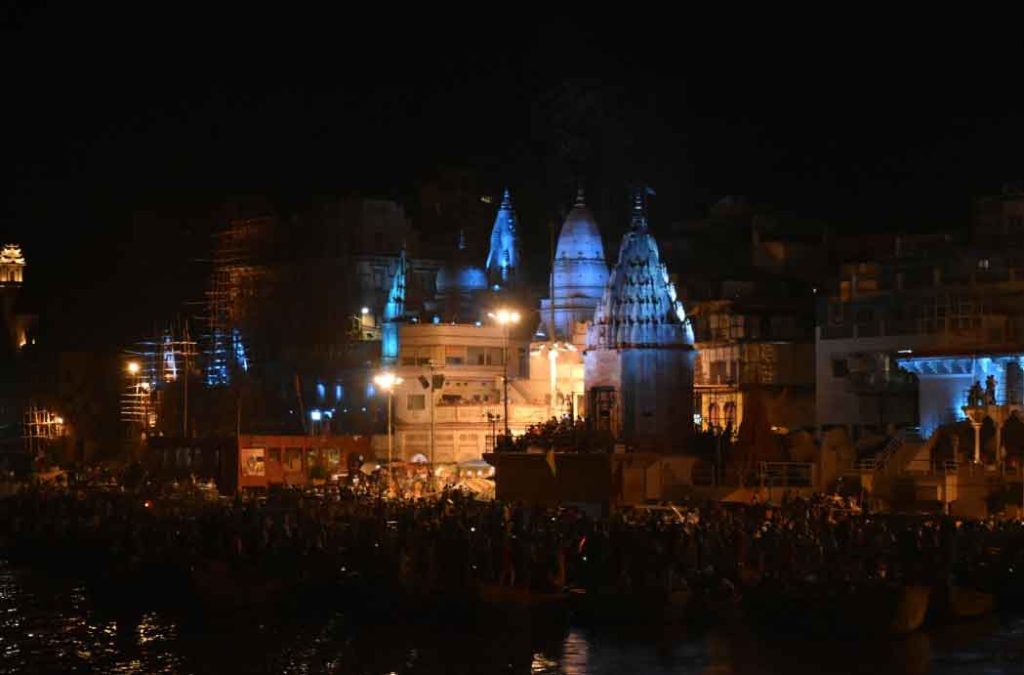
According to local legend, it is said that Lord Shiva tossed his sword (khadga) at this juncture, and thus was born the Assi River, the location formed by the convergence of the river Ganga itself. Local legend also states that it is named “Assi” after the 80 (assi in Hindi) steps that descend to the water. The mythical characterisation deepens, as this is the very location where the goddess Durga threw her sword after vanquishing the demon, Shumbha-Nishumbha. Assi Sangam has for centuries been a destination for pilgrims coming for puja and worship, believing that it is a site of exceptional spiritual energy.
What Is Assi Ghat Famous For?
Assi Ghat is a vibrant culmination of spirituality and ancient traditions. The dawn begins with the stunning Ganga Aarti, lamps illuminate the Ganges, and priests perform their rituals that remain unchanged over centuries. This daily event is not just a performance for tourists; it is the spiritual heart of Varanasi and also attracts locals who have been visiting this spectacle all their lives. During funeral ceremonies, the families send their loved ones on their final journey down the Ganges, believing their souls would attain “Moksha”, and thus be relieved from rebirth. This ritual at the ghat is an example of the Hindu belief system concerning life, death, and transcendence.
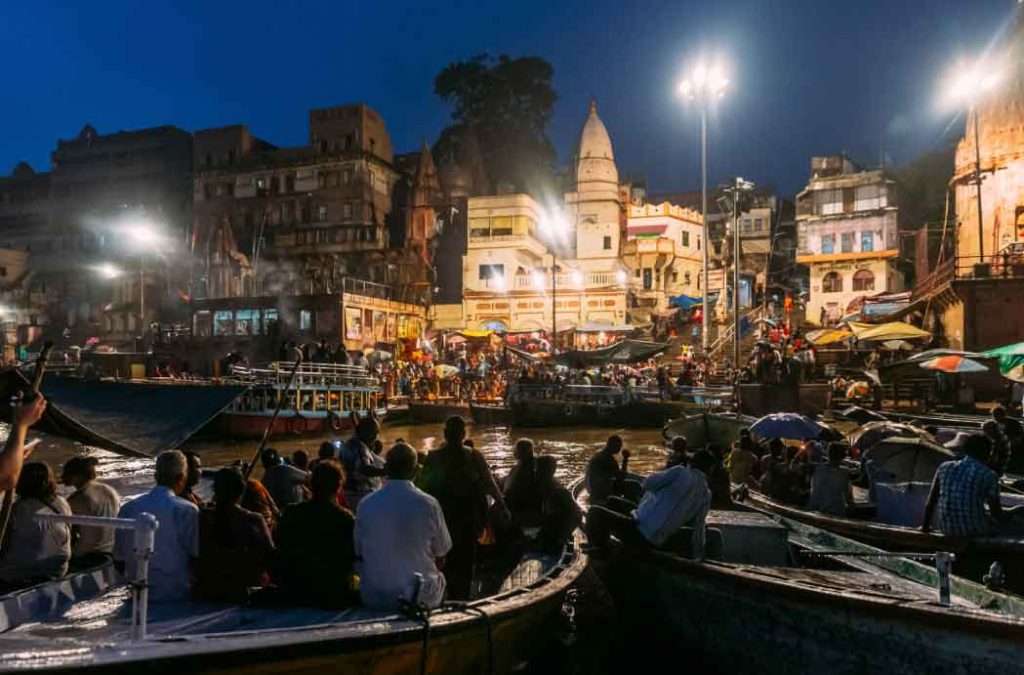
The magic of Assi Ghat is accentuated by seasonal festivals like Dev Deepawali and Chhath Puja, where the river of light is covered with thousands of clay vessels. The priests, some belonging to family lineages who have served at the ghat for 10 to 15 generations, are living libraries of Varanasi’s history. They are also the cultural ambassadors who help contextualise the spiritual connections with visitors while preserving their sacred integrity.
5 Things to do in Assi Ghat, Varanasi
As the day goes on, Assi Ghat changes radically. In the morning, enjoy the golden sunrise. By midday, students from the nearby Banaras Hindu University gather to share some chai and conversations, and boatmen shout and try to gather passengers. As evening descends, riverside cafés buzz with travellers sharing stories from their trips. Here are 5 things to do in Varanasi near Assi Ghat, throughout the day.
Tranquil Boat Rides
Experiencing the Ganges on a wooden boat is exquisite. You can catch a ride out on sunrise when the river resembles liquid gold and you watch the ghats come to life, or on sunset when you watch the sky and surroundings glow with dreamy light.
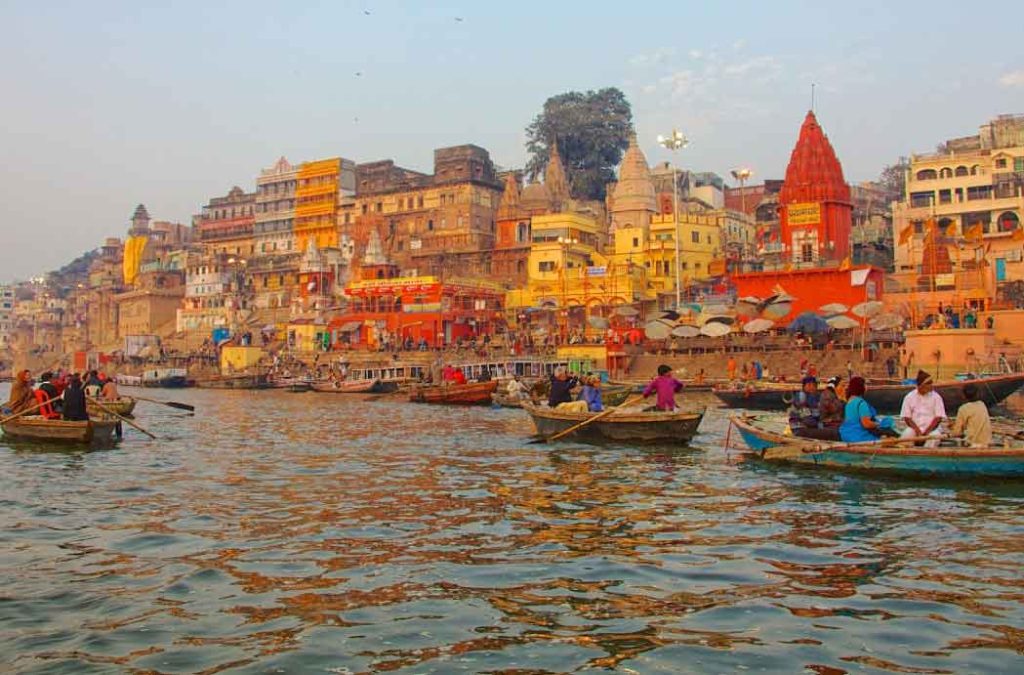
- Cost: ₹200-₹300 per hour.
- Bonus Tip: Pay a little extra and ask the boatman to take you to the main ghats and narrate the folklore associated with the ghats.
Hot Air Balloon Ride
For an experience you won’t forget, consider booking a hot air balloon ride over Assi Ghat. Floating effortlessly over this ancient city provides unique and breathtaking viewpoints of the winding Ganges and the small maze of lanes below.

- Cost: Starts from ₹5,000 per person
- Bonus Tip: Take the hot air balloon ride during the early morning hours when the winds are calm.
Evening Ganga Aarti
The daily Ganga Aarti at Assi Ghat, Varanasi is pretty small compared to the ceremonious and renowned Aarti at Dashashwamedh Ghat, but every bit as beautiful and also less crowded. The priests with their traditional attire perform synchronised rituals with multiple brass lamps, the sound of bells and a plethora of Sanskrit chants.
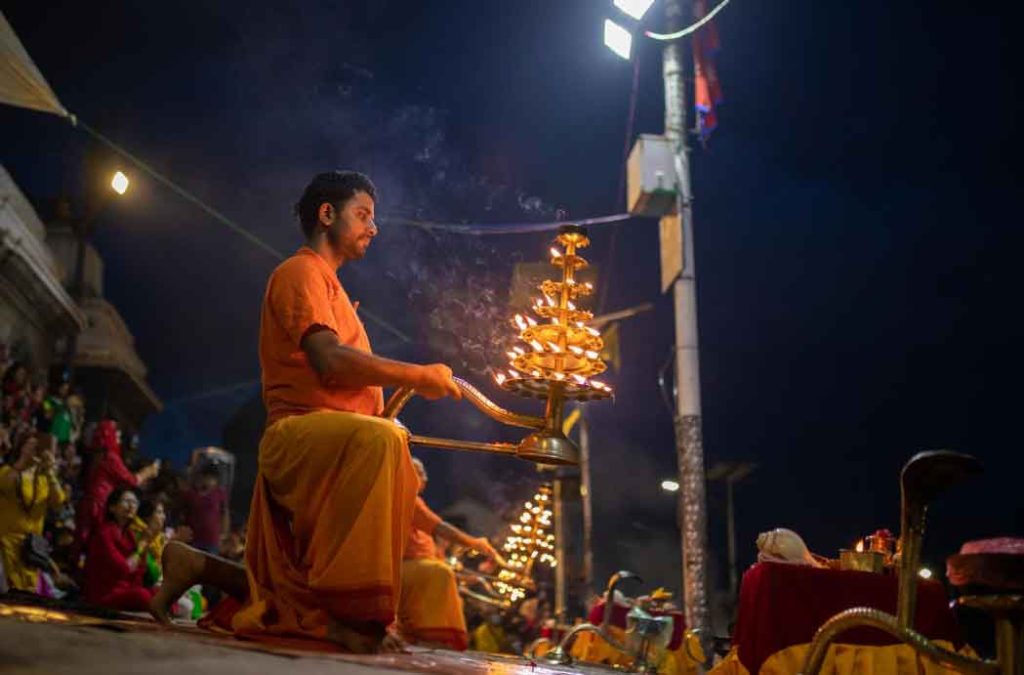
- Cost: Free
- Timings: Aarti starts at 6:30 PM
- Bonus Tip: Arrive early enough to find ample foot space on the steps or grab a spot on the boat.
Visit Assi-Sangameshwar
The temple where the Assi River meets the Ganges is dedicated to Lord Shiva. It is said that the sage Shipi Vyasa once meditated here. Head inside to see an enigmatic, larger-than-life Shiva lingam and several carvings of colourful images representing stories of the Rig Veda.
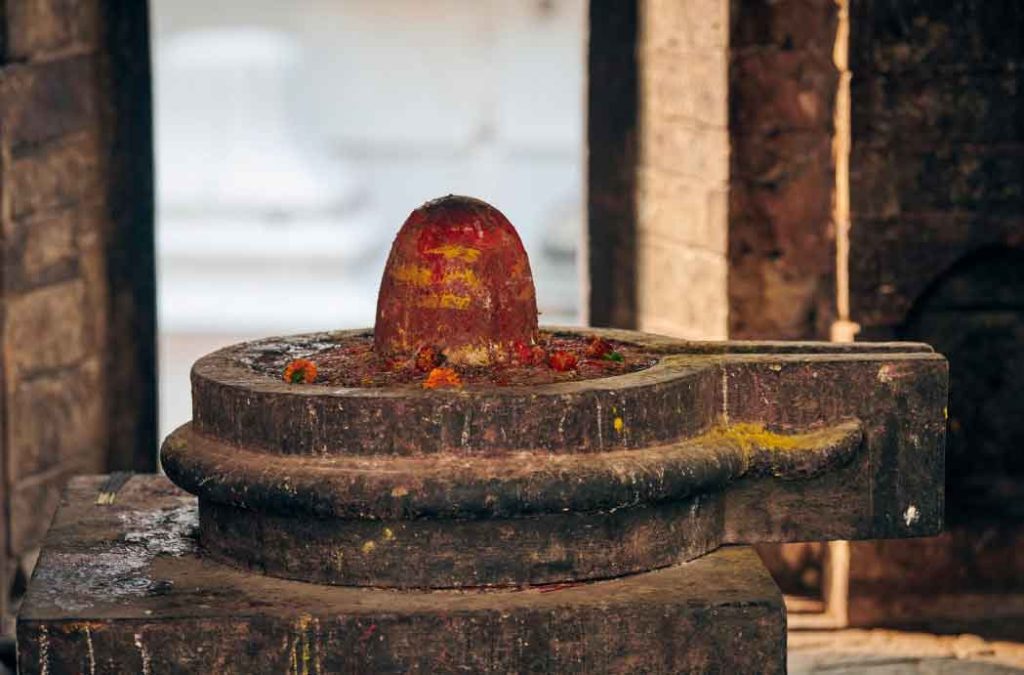
- Cost: Free
- Bonus Tip: Reach past midday when it is peaceful and less crowded, so you can freely observe the designated rituals undisturbed.
Visit Lolarka Kund
Lolarka Kund can be found tucked away behind Assi Ghat, Varanasi. It is a sacred stepped tank that certainly holds a historic significance. It is widely believed that childless partners who bathe in the Lolarka Kund during the annual Lolarka festival are blessed with children (left to the reader’s discretion).
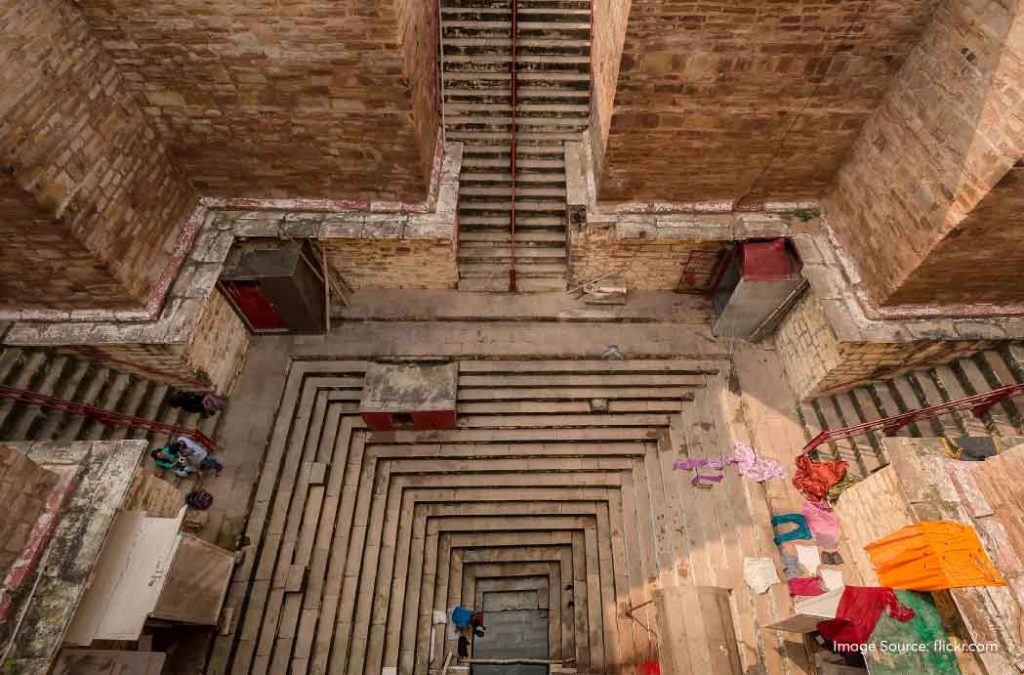
- Cost: Free
- Bonus Tip: Visit the Lolarka Kund early in the morning when the sunlight filters through the structures to form a mystical appearance.
Festivals Celebrated in Assi Ghat, Varanasi
Assi Ghat, Varanasi, with its deep-rooted cultural backdrop, really comes out with vibrant colours during Hindu festivals. Some of the famous festivals celebrated in Assi Ghat, Varanasi are as below.
Mahashivaratri
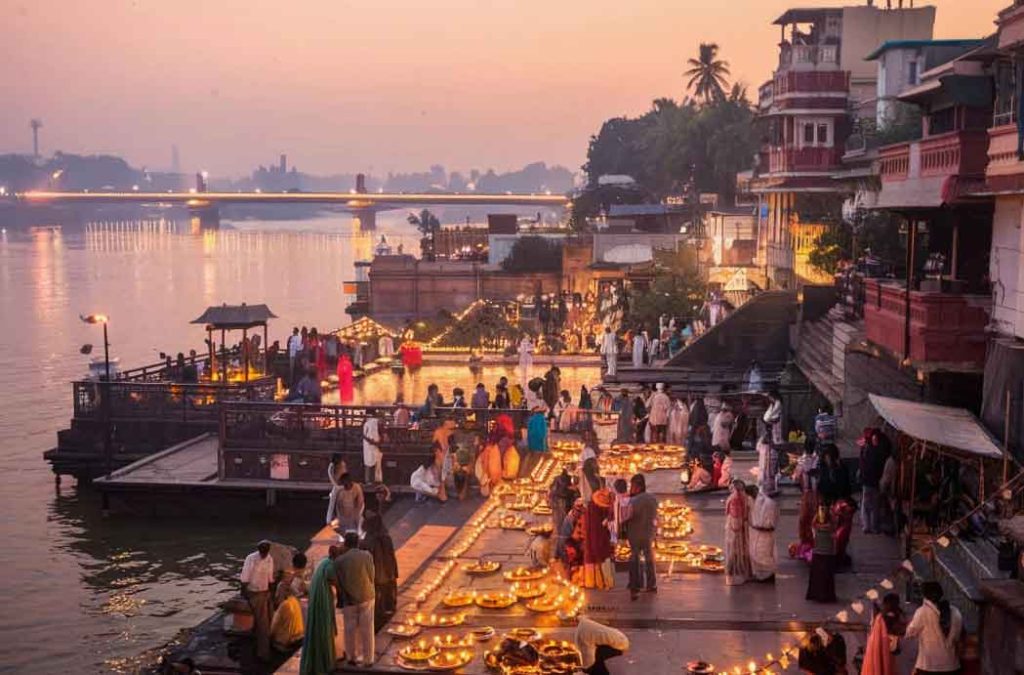
Assi Ghat comes alive on Mahashivaratri. Thousands of devotees visit this auspicious place where the Assi River meets the Ganga River to revere Lord Shiva. The night is a nonstop display of chanting, meditation, and prayer. The way this celebration stands out at Assi Ghat is with the massive lingam (symbol of Shiva) entirely made out of sand, which the devotees worship throughout the night.
Ganga Dussehra
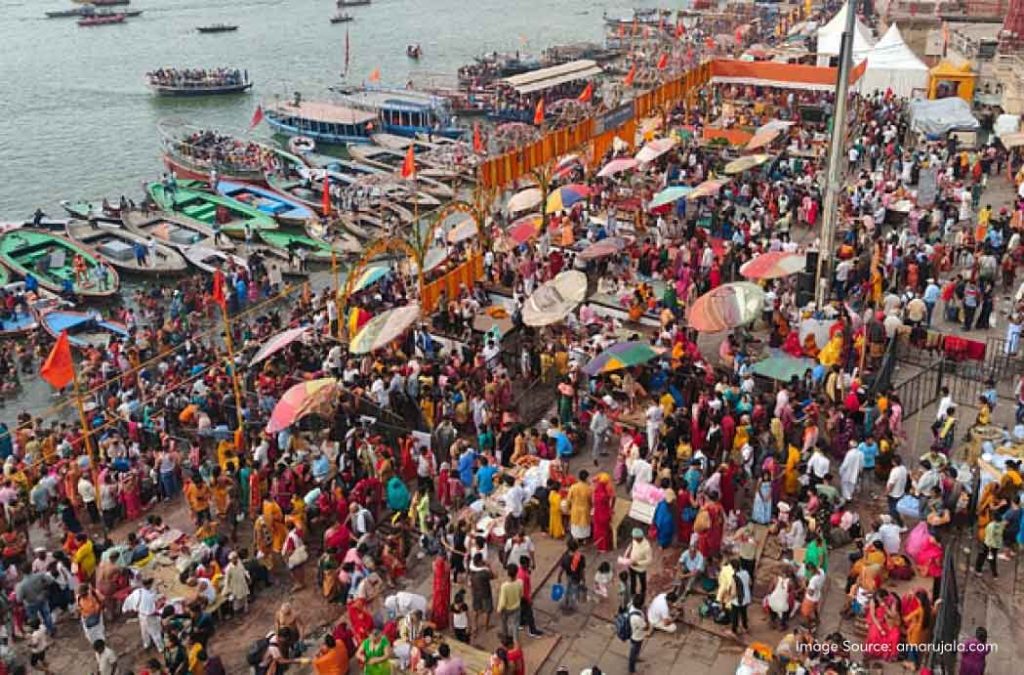
This main festival takes place for 10 days and is the depiction of Goddess Ganga descending to earth. At Assi Ghat, this festival takes place in full glory, where devotees arrive early morning to dip in the Ganges River, believing it’ll wash off their sins and heal their bodies. The magic of the night is when thousands of floating diyas decorate the river with light.
Dev Deepawali
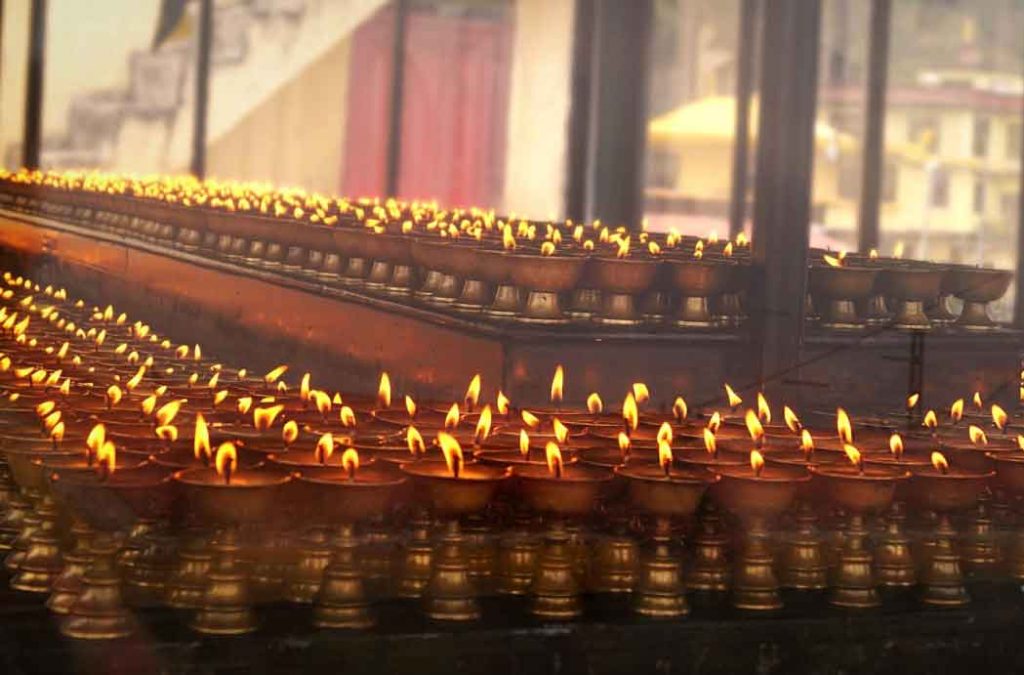
Ever witnessed over 20,000 diyas lighting up the river at the same time? That’s Dev Deepawali for you at Assi Ghat, Varanasi. Arriving fifteen days after the Diwali festival, this is a “Festival of Lights of the Gods” that transforms the steps into a palette of sparkling flames. These flames’ reflection in the water mimics the stars in the sky. Priests perform the famous Ganga Aarti, and classical musicians assemble for impromptu performances along with their instruments.
Ganga Mahotsav
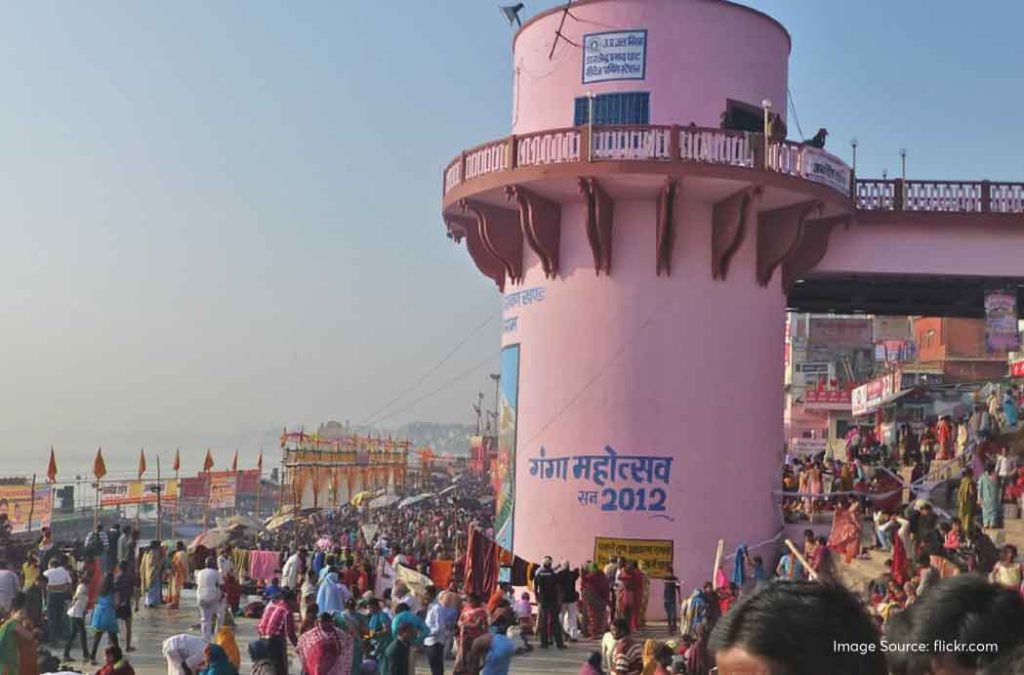
A five-day cultural festival with a showcase of the glorious heritage of Varanasi. Assi Ghat is undoubtedly a popular venue for classical music concerts and dance, and folk art shows. The festival brings together a host of prominent musical artists from across India, who entertain the crowd with the scenic backdrop of the Ganges. The vibrant atmosphere of the festival is equally exciting with dawn-to-dusk boat races, and food stalls serving local dishes from the Varanasi cuisine.
Holi
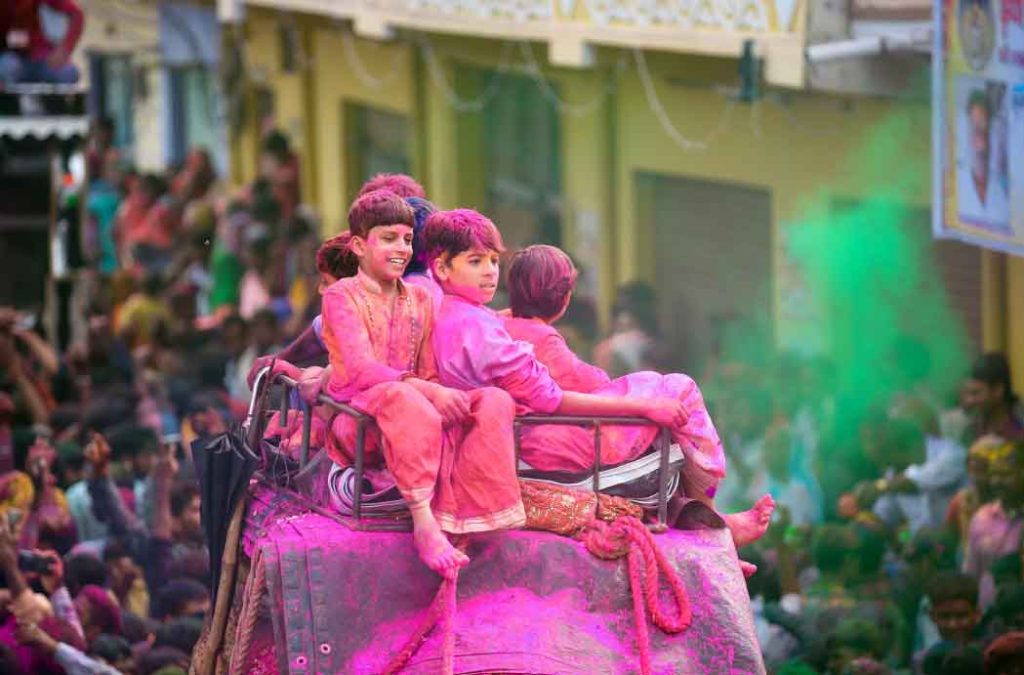
Holi at Assi Ghat is not only about colour. The celebration starts the night before with Holika Dahan, where huge bonfires light up the ghat. The next morning, you will be soaked with colour and water, and bhang (the traditional infusion of cannabis in a drink) will flow freely. The foreign tourists love it, bringing multicultural sensations, and all dance together, singing folk songs and drum beats.
Makar Sankranti
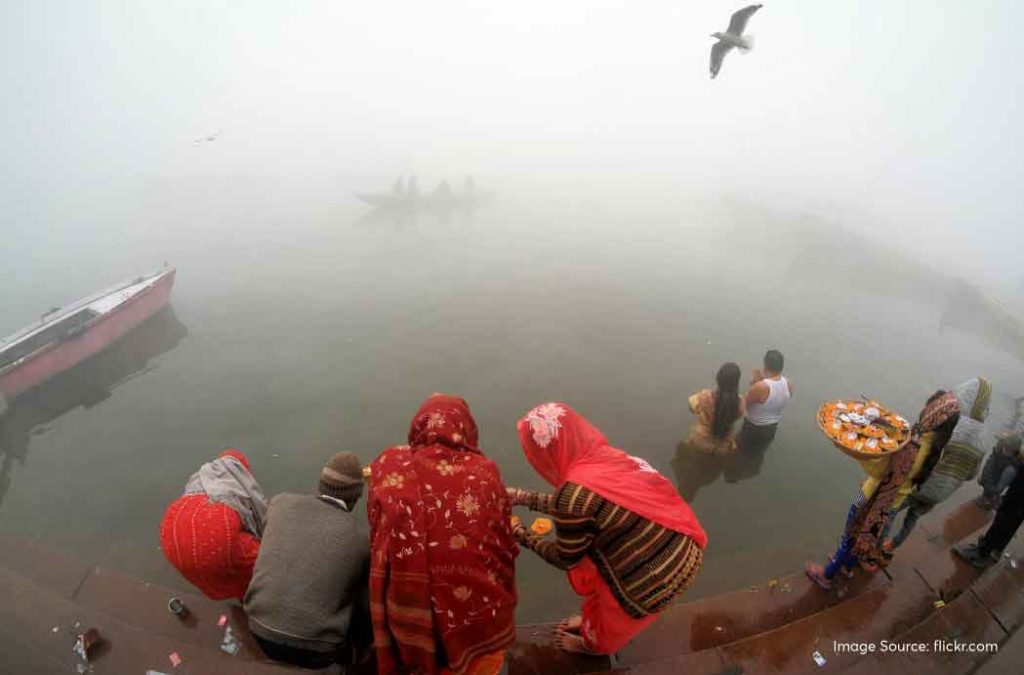
The harvest festival brings a different energy altogether to Assi Ghat. The day will start early, and everyone takes the ritualistic bath and then gets dressed for elaborate ceremonies to the sun god, offering prayers and thanks. Those flying kites fill the sky above Assi Ghat, and many participate in friendly kite-fighting competitions. A sweet food made of sesame seeds and traditional jaggery is exchanged as a gift of goodwill towards each other. Priests will also perform special pujas (prayers) for pilgrims going to Varanasi, hoping for the blessing of prosperity in the coming agricultural season.
Bharat Milap
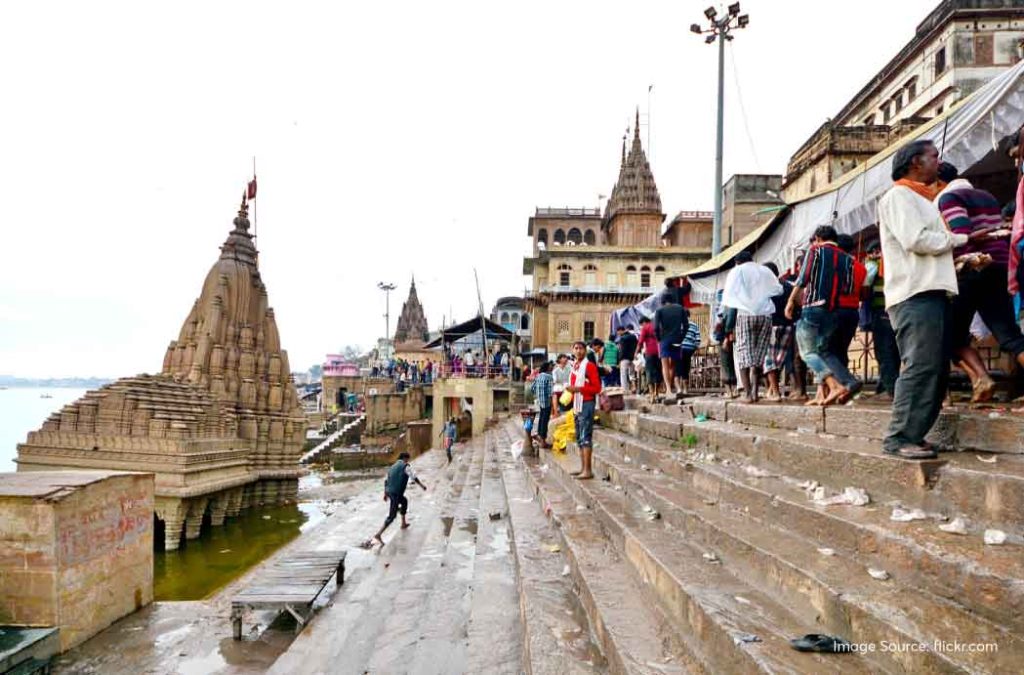
This festival is a phenomenal theatrical celebration collectively recreating the deep emotions of Lord Rama reuniting with Bharat after his 14-year exile. In Assi Ghat, people actively participate in a series of processions, and actors dress up as characters from the Ramayana epic. In comparison to many festivals, the Bharat Milap celebration reflects upon the traditions going back thousands of years. This forms a cultural presentation that describes sacred rituals, rooted in the people of Varanasi.
How to Reach Assi Ghat, Varanasi?
Getting to Assi Ghat is already half the adventure and requires some local knowledge. Staying in hotels near Assi Ghat, Varanasi, or any other hotels in Varanasi is an advantage where you can easily request a paid taxi service or book a sightseeing package from the travel desk. Alternatively, there are multiple ways to reach Assi Ghat, Varanasi, depending on where you start.
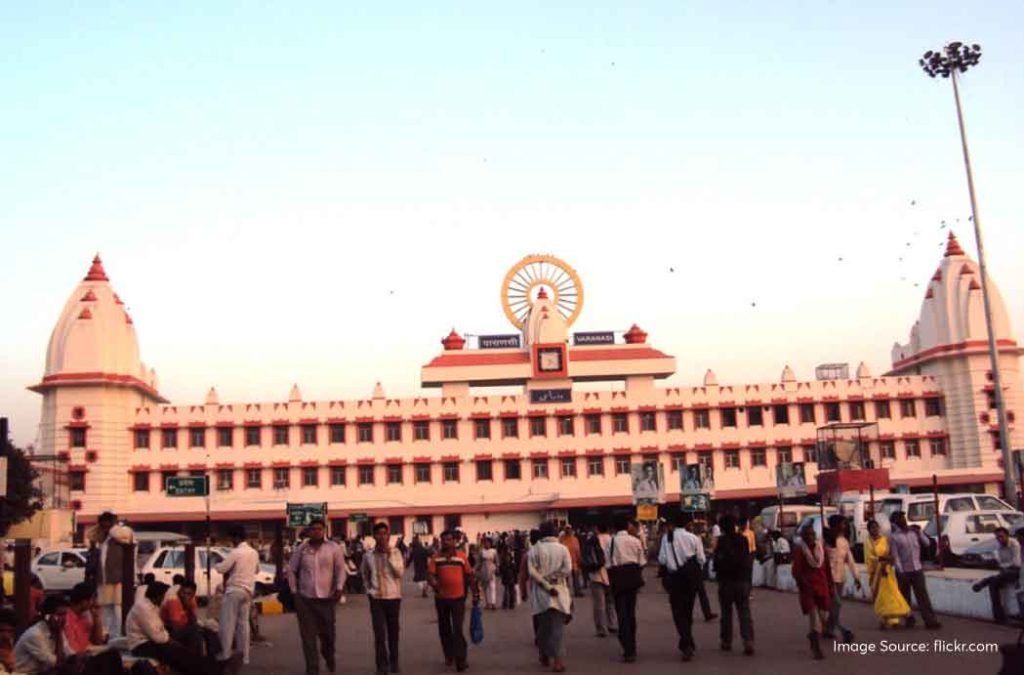
Varanasi City Centre: The best way would be to take an auto-rickshaw; the fare should be in the range of ₹100-150. You can also follow the locals and get the shared e-rickshaw, which would cost you around ₹20 per person.
Varanasi Airport: Taxi is your best option. The fare is about ₹600-₹800, and you will reach Assi Ghat in 30-40 minutes. Pre-paid taxi booths are available at the airport terminal for smooth transport.
Varanasi City Station: Assi Ghat is about 10km from this location, making a taxi a good option. If you take the route via Bhelupur – Durgakund Rd, you get to visit famous temples such as Mrityunjay Mahadev Mandir, Kaal Bhairav Temple and Vindhyachal Mata Mandir on the way. Additionally, there are many hotels near Varanasi City Railway Station, where you can take a quick nap and recharge after a long train journey.
Varanasi Junction Railway Station: You can take a taxi from the taxi stand at the railway station, and about ₹250 will get you to Assi Ghat in about 30 minutes. For a truly local experience, you can catch a bus to Lanka Gate, just a 15-minute walk from Assi Ghat, from the bus stop.
Manduadih Railway Station, Varanasi: A short 30-minute ride, costing about ₹100- ₹150, will bring you to Assi Ghat from this railway station. You can also book a stay at one of the hotels near Manduadih Railway Station, Varanasi, so you can drop off your luggage and freshen up on arrival before heading out.
Old City, Varanasi: The most scenic approach would be on foot. Take a walk along the riverside path that connects all the 88 Ghats. Start from the Dasaswamedh Ghat and walk downwards for about 30 minutes.
The best way and the crowd favourite is to take an early morning boat from Dasaswamedh Ghat and approach Assi Ghat in the most authentic and magical sense of the word, by river. This would cost you about ₹500-₹600 for a private journey and ₹50-₹100 for a shared ride.
[treebo_visual_elements header=”Book Budget Hotels in Varanasi” city=”Varanasi”]
Best Time to Visit Assi Ghat, Varanasi
While there is no particular time of the year that is considered the best time to visit Assi Ghat, Varanasi, the ideal time can vary based on the visitor’s plans and schedule. Additionally, different times of the day also offer something unique and different to experience in Varanasi.
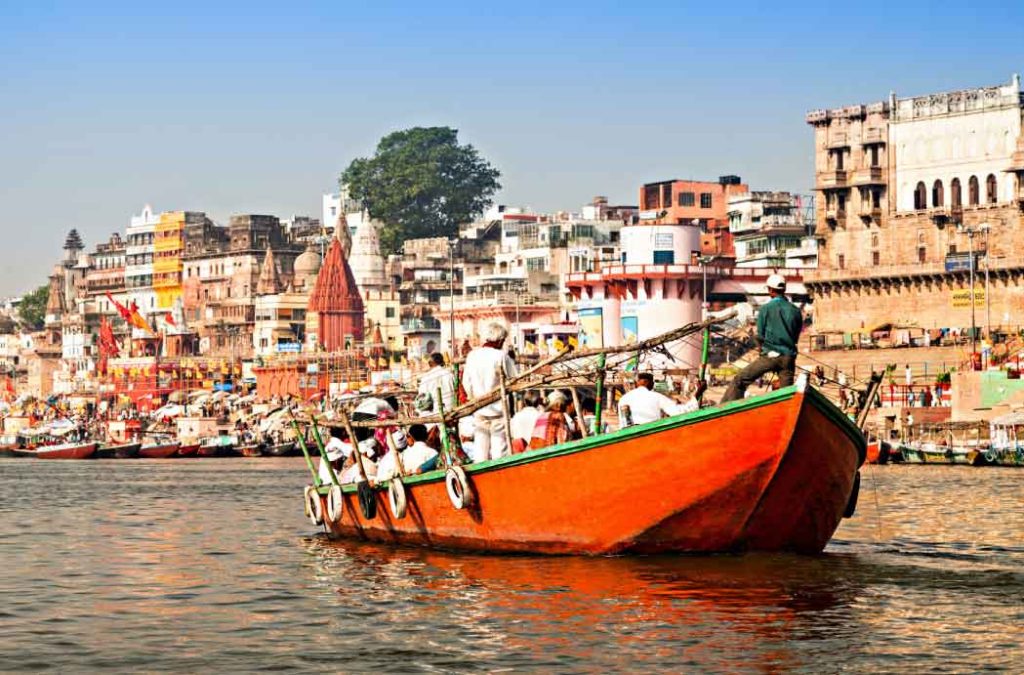
November-February: The winter months, when the temperature is cool and pleasant. This makes exploring the beautiful city more comfortable and less exhausting, compared to the summer months. Festivals like Dev Deepawali (November), Makar Sankranti (January) and Maha Shivratri (February) all fall in the same period.
Dawn (5:00 AM – 7:00 AM): Perhaps the most ‘authentic’ time of day. Morning Ganga Aarti, people doing yoga on the bank, locals doing their daily rituals, all just after the golden light of sunrise. This is one of the most spiritual times at Assi.
Mid-morning (8:00 AM – 10:00 AM): Ideal for watching people in wrestling akhadas, traditional wrestling schools, and witnessing people practice classical music at the ghat.
Sunset (5:30 PM – 7:00 PM): When the ghat comes alive with music, conversation, and oil lamps. Artists and Musicians will often gather naturally at this time playing a soundtrack complementing the calming sunset.
If you are to catch the various experiences spread across different time intervals of the day, staying somewhere close by will be crucial. Check out the Treebo Club hotels near Assi Ghat, Varanasi, which are located just 4 km away. You can easily capture all the important moments of the day without losing time in the commute. If you plan to visit other tourist places, Treebo Club offers multiple hotels in Varanasi for you to choose from.
Tips for Visiting Assi Ghat
Assi Ghat, Varanasi, is not just a destination; it is a living, breathing, spiritual centre for the local people. If you aspire to be a responsible visitor, follow the tips below.
- Dress appropriately. Both men and women should have their shoulders and knees covered. Traditional clothing is preferred while visiting the holy places.
- Ask permission to take photographs of the ghat – be especially mindful of your photography when there are ceremonies, or if someone is bathing. Asking and showing respect for their right to privacy and freedom of expression of their spirituality will go a long way.
- People are expected to remove their shoes while visiting the temples in Varanasi; in most cases, you will either see some shoe stands or find someone to help watch or take care of your shoes for a small fee (₹5-10).
- Public displays of affection should be avoided; in most cases, it is considered unacceptable behaviour, especially in places associated with religion and spirituality.
- If you visit cremation ghats, please be respectful and observe them from a distance. These are deeply personal moments for families, and they deserve privacy.
- Please don’t feed the stray animals; it will create dependencies for many of the animals and/or potentially increase health risks to them.
- During your travel, purchase from local suppliers, and not from any of the large international brands. The chai wallahs, boat operators, or small food stalls may rely on tourism to earn a living.
Spiritual Journey Through the Oldest City in the World
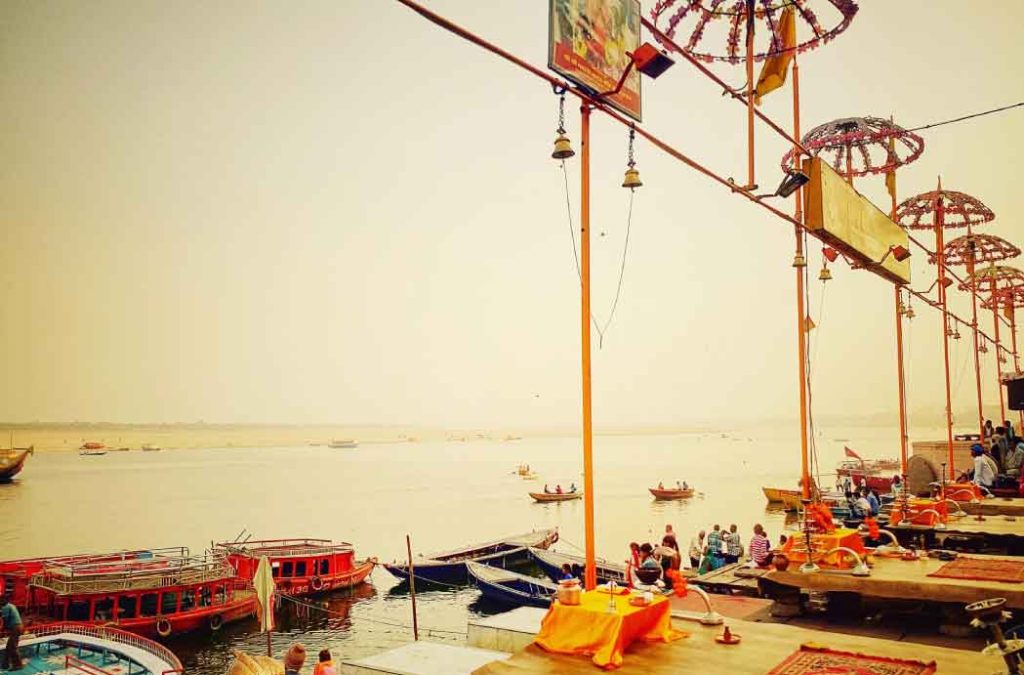
Assi Ghat embodies Varanasi’s spiritual past as a living landscape where rituals that are centuries old co-exist with the modern world. The morning aartis, the space to engage in philosophical discussions, boat rides upon the river, and cultural displays all contribute to the site, which travellers from everywhere in the world witness as a part of their spiritual journey.
